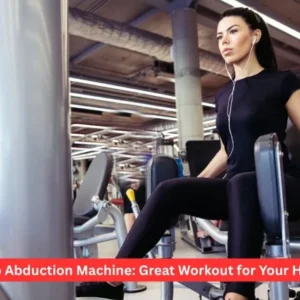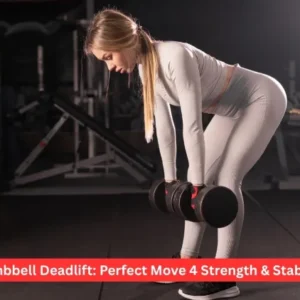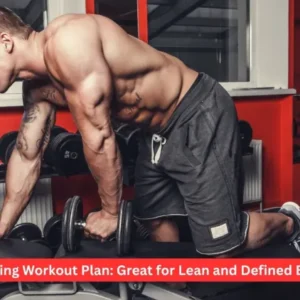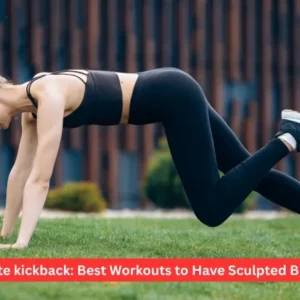You may have struggled with the barbell feeling as though it could slowly escape your grasp in the middle of a deadlift. It’s common to feel your forearms burning after using kettlebells for a series of heavy, high-rep swings. Maybe you’re simply interested in increasing your ability to serve well and strongly on the court. Having weak forearms can make you slower and could make your grip let go before your main muscle groups ever tire. It can be very frustrating when the muscle you’re targeting is ready for more, but your forearms let you down.
If muscle fatigue in your forearms seems common to you, it might help to check out a few forearm exercises (and if you’re just here because you want to strengthen or shape your arms, that’s fine too). Forearm routines tend to be missing from exercise schedules, and selecting the most helpful ones is often tough. We’ve selected the top exercises for your convenience. And the best part? Working out your forearms can be done using only a handful of exercises. Strengthening your forearms merely requires a few forearm exercises for another week. Must use Wrist Wraps while holding a dumbbell so that it doesn’t hurt.
What are the muscles in your Forearm Exercises?
The forearm, between the elbow and the hand, is comprised of two groups of muscles – the two main groups. Flexors and extensors. They donate twenty muscles, and they narrow and expand your wrist and elbow, and also move your fingers.
The brachioradialis is the strongest in your forearm. The flexor brachioradialis is the muscle on the outside of your forearm that is used anytime you bend your elbow. If you wonder how to make your forearms bigger, you should consider this muscle when doing forearm training. It’s a huge muscle, and training it will make your forearms look much larger. Although the majority of smaller forearm muscles cross the wrist joint, Brachioradialis do not, and thus can not be engaged by flexion or extension of the wrist. Instead, the elbow flexion/extension exercises should be used in training.
To create big forearms, one must work both wrist flexion/extension and elbow flexion/extension, one must use both the flexors and extensors, including the important brachialis.
Read more: Top 7 best Cable Forearm Exercises for Muscle Growth & Strength
How Can I Work Out My Forearms
To build big forearms and make them stronger, you don’t have to do a lot of forearm exercises, but you should incorporate moves involving wrist and elbow flexion and extension with targeted grip exercises to provide the forearms attention they deserve. The ideal exercises to be incorporated in your forearm exercises are:
- Wrist flexion/extension: Wrist curl
- Grip strengthening: Farmer’s carry and plate squeeze

6 best Dumbbell plank forearm exercises.
1. Palm-Down Wrist Curl
To start with, we are going to hit your wrists with two derivatives of curls. The routine curl (palm downwards) and the supinated curl (palm up).
The standard wrist curl exercises your wrist flexor muscles (muscles that are under your forearms). Exercising such muscles will lead to larger forearms, stronger wrists and greater grip.
The trick to these dumbbell forearm exercises is choosing an appropriate weight (don’t go too heavy, but don’t go too light either, so they never make you feel like they’re at work!), make your reps controlled and concentrate on full movement.
Palm-Down Wrist Curl: How to Do.
- The best practice of doing wrist curls is where you place your forearm on a bench and move your wrist (and only your wrist).
- Kneel with your face on the horizontal side of a flat gym exercise bench. Let’s use a pair of light dumbbells in each hand. Leaning on your forearms on a bench and moving them so that your palms are facing upward.
- Begin the exercise by arching your ankle towards you.
- After you have bent the dumbbell as much as you can, you hold your breath, then release, returning the movement to the beginning point.
- Repeat 15-20 times.
Tip: Slowly perform the wrist curls to increase time under tension (TUT) to build a high level of muscle hypertrophy.
2. Palm-Up Wrist Curl
Before you do the forearms, get twisted and do a palm-up wrist curl as well.
Supine forearm curls fire your wrist extensors (muscles on top of your forearms), and they balance your gains in the forearm and strength in a grip, and you end up with big, round forearms. Your guide to Wrist curl Exercising (Palms Up).
- Centre your knees on the horizontal side of a flat exercise bench.
- Hold two light dumbbells in your hands on each side. Having your palms down, place your forearms on the bench.
- Start the exercise by bending the ankle toward yourself.
- Hold your arm in full stretch and pause, relax, and it will move back to where it started.
- Repeat 15-20 times.
Tip: As with the palms down wrist curl, it is crucial, therefore, to pay attention to a slow and mindful movement through the entire ROM.
3. Reverse Grip Curls
Curls are what people think about when they think about building bigger biceps. Yet the battle lies in your palm with a simple switch of how you hold the weight, you can alter the selection from biceps to brachioradialis – a dominant forearm muscle. A good example of modification is the reverse grip curl. Overhand (palms-down) grip brings less use to the biceps and puts more emphasis on the brachioradialis, which makes it a good exercise for expanding the forearms.
There are varied ways that one can use in this exercise; using a barbell, EZ curl bar, dumbbells or even a cable machine.
- Screw a straight or an EZ bar on the low pulley of a cable machine.
- Choose the bar, and grab it with an overhand grip (palms down) and place it on your thighs.
- Straight up: back straight, core contracted.
- Raise the bar upward while keeping your hand bent to create controlled movement while rolling body bar into your chest.
- Spend a little time at the peak of the movement.
- Lower the bar very slowly into the starting position without letting the weights drop.
- Perform 10–12 repetitions.
Pro Tip:
So, if you want to increase brachioradialis involvement, do partial reps at the end of your set. The elbow positional angles of 100–120 degrees strongly activate the brachioradialis, with extended postures promoting mainly biceps activation.

4. Zottman Curl
Zott man curl builds the biceps with isolation of the triceps downwards the fore arm muscles, which is a rotational curl exercise. This is a wonderful dumbbell technique for working the forearms if you happen to be working out biceps as well, to work your forearms simultaneously while training your total body from head to toe.
Zottman curl exercise: how to do it.
- Take a dumbbell in each hand, arms out in front with your thighs flexed, straight out. Spin your wrists forward till they face forward (supination/ normal – bicep curl)
- Pull your tummy, pull it down into your lower torso, and get the elbows close to your body for two dumbbells. When performing this, stick your elbows in near your body. When you wake, you should attempt to tense out the biceps with purpose, and turn your wrists now into a supine position (palms out).
- Gradually move your dumbbells down by straightening your arms using your outstretched elbows to stretch.
- Bring your wrists back to a supine position and warn what you’d done.
Tip: For you to carry out this workout effectively, you don’t have to get large dumbbells. Use a medium pair of dumbbells, and make your movements not rapid, not jerky. Don’t wobble. To outside them all out in your gains, you focus on your muscles, you focus on, target, or make the mind-muscle connection.
5. Farmer’s Carry
Our grip strength training is our next piece of the jigsaw in completing our forearm strengthening exercise. Because the muscles that move your finger are located on the forearm, the tendons to move the muscles will be located on the forearm, and if the grip is trained, the forearm muscles will strengthen. Nevertheless, from hypertrophy, it would not be possible to guess that the increased power of the grip will add a lot to the forearms. It is, however, going to accomplish tremendous benefits in other grip exercises than deadlifts and pull-ups, and you will be able to lift more weight or hold the weight longer.
It’s not enough; it is worth having a good grip outside a gym. Individuals with superior grips have superior immune systems, better cognitive functioning, more life satisfaction and more subjective well-being, fewer symptoms of depression and anxiety.
The farm carry (farmer’s walk is one of the greatest exercises for a stronger grip. It will also bring your whole upper back to business while working the core. You can do that with dumbbells or kettlebells, but without the weight, it’s just not an option!
The Farmer’s Carry: What to do.
- Select a pair of heavy dumbbells or maybe kettlebells and put them on the sides of your ankles.
- Begin with your feet being a little wider than hip-width distance apart and chest up, and neutral spine. From that position, lower down to a squat and reach out to either side to pick a dumbbell or kettlebell next to either foot. Keeping a slight forward lean, engage your shoulders – drawing them down and back, brace your core. When you stabilise, pull the weights tight and use full strength to hold them in place.
- Step forward and start walking. Don’t bend your head and shoulders. Walk as much as it was done, or as long as you’d like to walk until you’re at your distance and place the dumbbell down.
Tip: The other experiment that you will do is in hook grip: here, you lock your thumbs under your other fingers. It might not be comfortable in the beginning, but you can use it to get a safer hold over the dumbbell or kettlebell, also it can make you lift more weights or walk more distances.
6. Plate Squeeze
The plate press is not one of the most popular exercises in gripping, but it will work your grip power. Take a plate, hold it as you would have if you were going to eat something out of it on your dinner table – grip between your thumb and fingers. It is perhaps easy, but a good wear out the forearms, increase the strength, and stamina which you’ll use in a whole series of other exercises that will use the forearms.
Different from farmer carry, you can’t wrap fingers around the plate at plate crunch, which adds the load to the mentioned muscles and makes holding even a small weight more complicated. Plate crunch: what to do:
- Take two light plates and hold them in your upright hand. Grab them by the outsides of your thighs.
- Bend toward it with one hand bn the end of the plate in hand; the hand position of the edge is between the thumb and fingers.
- Pick up the plates while under pressure, squeezing them tower your thumb and fingers to keep your grip. Pull back and down your shoulders. Throw your eyes forward and pull your core into the movement.
- Hold on to the plates until your hands slip and refit them on the ground.
- You should try a plank for 30-60 seconds.
Tip: If 60 seconds over here with the plates is starting to look a bit too breezy for you, if you need a crank up a gear, then take the heavier plate and make it into something more interesting for yourself.

Conclusion
Powerful forearms are not a bonus – they are vital for performance, endurance and injury avoidance. Regardless of whether you’re increasing your weight load, working on your grip or want bigger arms, including targeted forearm work such as wrist curls, carries and plate squeezes can make a huge difference. It only takes several few moves each week to overcome the forearm fatigue, make your lifts stronger and create the foundation of strength supporting all the upper body.
Frequently Asked Questions
1. How often should I train my forearms?
You can work your forearms 2–3 times a week on their own, or as extras to your week’s pull or upper body day workouts.
2. Do forearm exercises help improve grip strength?
Yes, a lot of forearm exercises, such as farmer carries and plate squeezes, specifically increase grip strength, which in turn aids deadlifts as well as pull-ups, and sports performance.
3. Can I build bigger forearms with just dumbbells?
Absolutely. Many dumbbell-based movements are great for isolating the forearm muscles and causing growth, for example, wrist curls, reverse curls and Zottman curls.
4. Why do my forearms tire before other muscles during workouts?
Fatigue at early stages can be brought about by weak forearms or weak grip endurance. A good way to improve your performance in compound movements is through working out your forearms, making you better and for longer periods.







